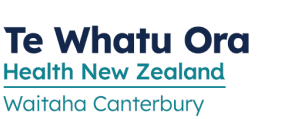What does it do?
Gliclazide is used to treat diabetes. It lowers blood glucose by increasing the amount of insulin made by your body.
Before you start
- Tell your doctor if you have kidney problems, or G6PD deficiency.
- Tell your doctor if you are pregnant, planning to become pregnant, or breastfeeding.
How should you take it?
Take gliclazide regularly as directed with a glass of water, preferably at the start of a meal.
What if you forget a dose?
If you miss a dose of gliclazide do not take it later. Skip the missed dose and continue as directed. Do not take two doses at the same time.
Can you take other medicines?
Some medicines available without a prescription may react with gliclazide including:
- miconazole oral gel (e.g. Daktarin Oral Gel®)
Tell your pharmacist or doctor about all medicines or treatments that you may be taking, including vitamins, herbal products or recreational drugs.
What side effects might you notice?
| Side Effects | Recommended action |
|---|---|
|
Low blood glucose (hypo): symptoms may include sweating, trembling, feeling anxious or irritable |
Drink or eat something sweet. Tell your health professional if this happens a lot or is severe. |
|
Skin rash, itching |
Tell your doctor |
|
Stomach upset |
Tell your doctor if troublesome |
If you notice any other effects, discuss them with your doctor or pharmacist.
Other information:
- If you are unwell, follow your diabetes sick-day plan, or talk to your health professional.
- Check your blood glucose level as directed by your health professional.
- You will need a regular blood test (HbA1c) to check how your diabetes is controlled.
- Alcohol may change your blood glucose levels and make you more likely to have a hypo. It may also mask your warning signs of low blood glucose. See Alcohol and Diabetes.
- Check your blood glucose levels before driving. Do not drive if you are having a hypo as low blood glucose could make driving unsafe. See Driving with diabetes
This leaflet contains important, but not all, information about this medicine.
Prepared by the MyMedicines Committee at Christchurch Hospital, Te Whatu Ora - Waitaha, New Zealand. October 2025
For more general information about this sheet and its contents, see: What does a My Medicines sheet cover?
Te Reo Māori
Te Reo Māori information sheets supported by Health Quality and Safety Commission New Zealand
Web links for this sheet in different formats
Click on buttons to copy web addresses for this leaflet:
If your browser does not automatically copy these links use its copy command instead.
About My Medicines
My Medicines Patient Information Leaflets (PILs) contain important, but not all, information about the medicines they describe.
For more information about the sheets, see: What does a My Medicines sheet cover?
My Medicines is developed by a team at Te Whatu Ora – Waitaha. Our team is made up of doctors, pharmacists, and a non-medical person to help us keep to plain language. We also discuss our information with specialist health professionals or groups when needed

